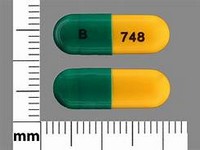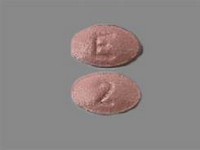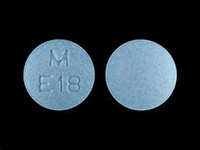indapamide

indapamide
CLINICAL USE
Thiazide-like diuretic:Essential hypertension
DOSE IN NORMAL RENAL FUNCTION
2.5 daily in the morningModified release: 1.5 mg daily in the morning
PHARMACOKINETICS
Molecular weight :365.8 %Protein binding :79 %Excreted unchanged in urine : 5–7 Volume of distribution (L/kg) :0.3–1.3half-life – normal/ESRD (hrs) :14–24/Unchanged DOSE IN RENAL IMPAIRMENT
GFR (mL/MIN)
20 to 50 : Dose as in normal renal function 10 to 20 : Dose as in normal renal function <10 : Dose as in normal renal function. See ‘Other Information’ DOSE IN PATIENTS UNDERGOING RENAL REPLACEMENT THERAPIES
CAPD :Not dialysed. Dose as in GFR <10 mL/min HD :Not dialysed. Dose as in GFR <10 mL/minHDF/high flux :Not dialysed. Dose as in GFR <10 mL/minCAV/VVHD :Not dialysed. Dose as in normal renal function IMPORTANT DRUG INTERACTIONS
Potentially hazardous interactions with other drugsAnalgesics: increased risk of nephrotoxicity with NSAIDs; antagonism of diuretic effectAnti-arrhythmics: hypokalaemia leads to increased cardiac toxicity; effects of lidocaine and mexiletine antagonisedAntibacterials: avoid administration with lymecyclineAntidepressants: increased risk of hypokalaemia with reboxetine; enhanced hypotensive effect with MAOIs; increased risk of postural hypotension with tricyclicsAnti-epileptics: increased risk of hyponatraemia with carbamazepine Antifungals: increased risk of hypokalaemia with amphotericinAntihypertensives: enhanced hypotensive effect; increased risk of first dose hypotension with post-synaptic alpha-blockers like prazosin; hypokalaemia increases risk of ventricular arrhythmias with sotalolAntipsychotics: hypokalaemia increases risk of ventricular arrhythmias with amisulpride or sertindole; enhanced hypotensive effect with phenothiazines; hypokalaemia increases risk of ventricular arrhythmias with pimozide – avoid concomitant useAtomoxetine: hypokalaemia increases risk of ventricular arrhythmias. Cardiac glycosides: increased toxicity if hypokalaemia occursCiclosporin: increased risk of nephrotoxicity and possibly hypomagnesaemia Lithium excretion reduced (increased toxicity) ADMINISTRATION
Reconstition
– Route
Oral Rate of Administration
–Comments
– OTHER INFORMATION
If pre-existing renal insufficiency is aggravated – stop indapamideDoses greater than 2.5 mg daily are not recommendedCaution if hypokalaemia develops Ineffective in ERF One-month studies of functionally anephric patients undergoing chronic haemodialysis have not shown evidence of drug accumulation, despite the fact that indapamide is not dialysable.
See how to identify renal failure stages according to GFR calculation
See how to diagnose irreversible renal disease
Home









